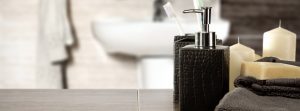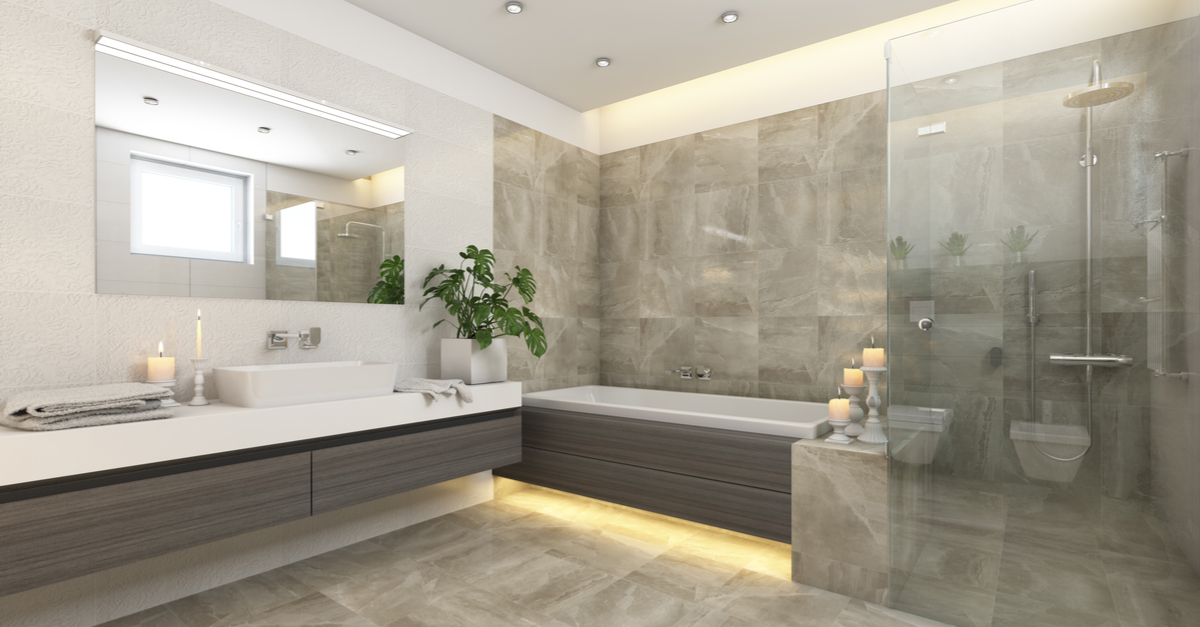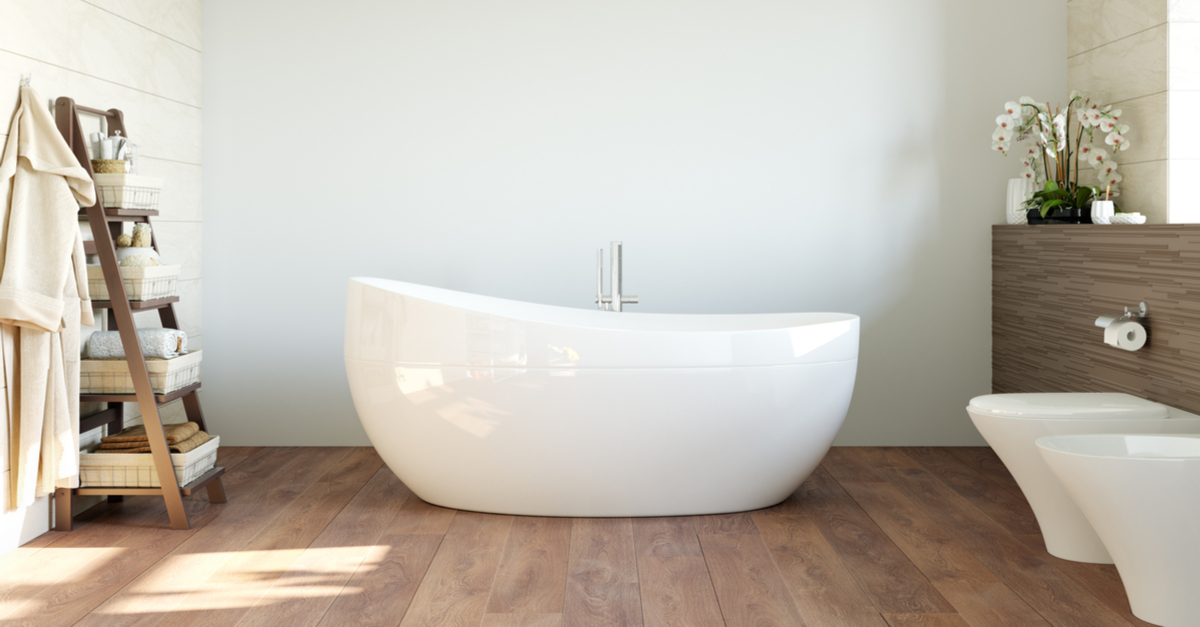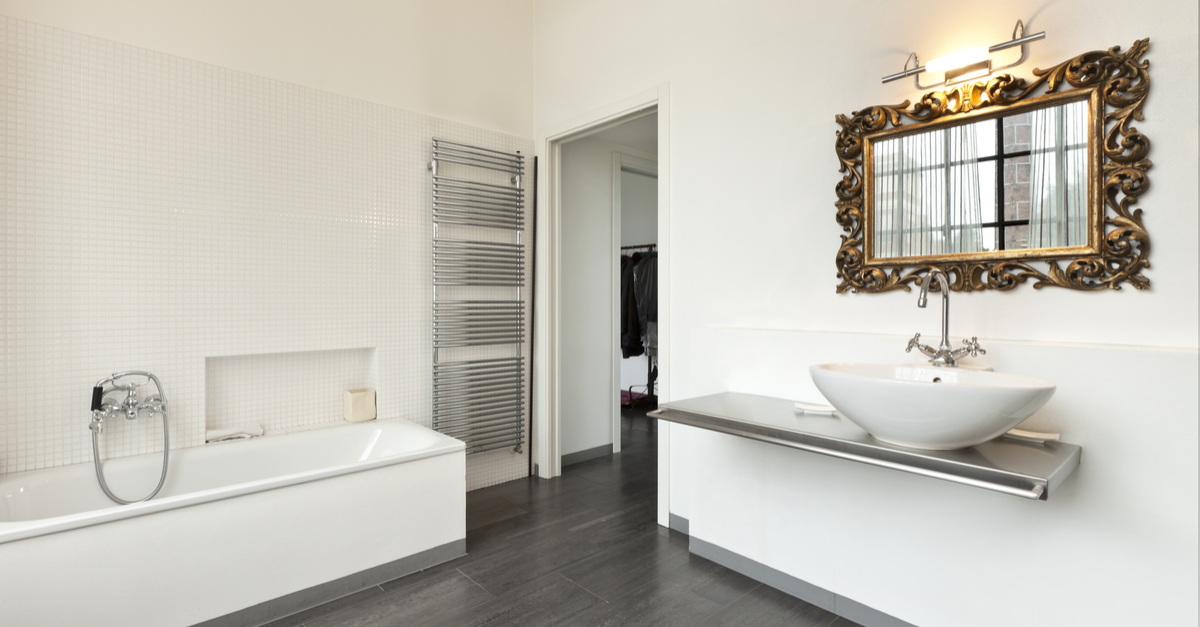Designing a Practical Bathroom

Function should always go hand-in-hand with aesthetics. A visually pleasing bathroom won’t be worth much if it isn’t practical.
So, in today’s post, we’d like to offer some useful advice on designing a functional bathroom that won’t leave you with regrets later.
Planning and organizing
Without any plans or organization, we’ll end up having to deal with a lot more stress and the risk of things not coming out perfectly.
Planning and organizing are the key to a successful remodeling or design project
So, before getting started, we need to ask ourselves the following questions:
- What kind of changes do I want to make?
- How much is my budget?
- By when do I want to finish my project?
Knowing the answers to these questions is crucial for your conversations with the professionals who’ll help you with your bathroom remodeling or design.
Choosing the elements of your bathroom
Before losing our minds over colors or decor elements, we need to think about the following aspects.
Functionality
A practical bathroom should adapt to the family’s needs as well as to the number of family members; in addition, it should be convenient to use, or in other words, it should make the most out of the space available.
These days, apartment sizes are smaller and smaller, resulting in reduced bathroom sizes as well. You should be aware of this reality when planning.
In light of the reduced space available, we should ask ourselves whether we want a bathtub or shower? Consider the pros and cons of each option as well as the needs of your family. Thinking about the family members themselves is also important for planning, for example, if you live with someone elderly, a bathtub wouldn’t be your best option.
On the same note, think about the amount of water each option uses. A shower uses less water, which makes it the more practical option.
- How many people will use the bathroom?
- Can you skip the bidet? If you don’t use one, you can forego it. By doing so, you’ll save space in your bathroom.
- Where will you place storage units? Underneath the sink, hung on the walls or as shelves?
When you have the answers to all of these questions, check to see where the water outlets are located. This will prevent any errors when setting up your bathroom.

Lighting
A practical bathroom also boasts good lighting. If you have natural lighting, that’s even better.
We recommend avoiding thick or dark curtains that could block the path of natural light.
Artificial light will ultimately be necessary as well, but if your bathroom isn’t that big, one or two lights should be sufficient. Use one for the ceiling to light up the entire room and the other for the mirror.
Walls and floor
There are all kinds materials for bathroom walls and floors. Therefore you’ll have to really think about the style that you want your bathroom to have as well as your available budget.
Ceramic tiles are the most common options for bathroom floors; they’re resilient and have a good price-quality ratio.
You could also consider teak, bamboo, vinyl or fake wood, which give a room warmth and are perfect options for rustic rooms.
If you’re working with a bigger budget and are leaning towards a minimalist, futuristic-look, try resin or natural stone, such as marble.

As for the walls, think about how you want them, and if you like tiling:
- If you don’t want tiles, micro-cement or concrete are great options; they’re currently popular trends thanks to their futuristic appearance.
- If you’re a tile fan, think about if you want tiles in just one color or if you want a mosaic.
Colors
Decorating is probably the more enjoyable part of planning because it allows us to tap into our creativity. To choose the colors for a practical bathroom, first think about its size.
- Small: light colors, such as white or cream, are better choices because they provide brightness and illusion of space.
- Big: feel free to play with a darker color range.

On a different note, remember to use decor pieces to add touches of color to your bathroom. Using elements won’t require further remodeling projects like you would need with tiles or wall colors if you get tired of the colors.
Thus, we highly recommend using lighter colors for your floors and walls.
Conclusion
A practical bathroom should meet our needs.
These cover the number of people who’ll be using the bathroom and the size of the bathroom itself.
Storage is an important aspect for a practical bathroom; so, find decor elements that aren’t only visually pleasing, but also space-saving.
Lastly, remember that function and aesthetics go hand-in-hand.
Function should always go hand-in-hand with aesthetics. A visually pleasing bathroom won’t be worth much if it isn’t practical.
So, in today’s post, we’d like to offer some useful advice on designing a functional bathroom that won’t leave you with regrets later.
Planning and organizing
Without any plans or organization, we’ll end up having to deal with a lot more stress and the risk of things not coming out perfectly.
Planning and organizing are the key to a successful remodeling or design project
So, before getting started, we need to ask ourselves the following questions:
- What kind of changes do I want to make?
- How much is my budget?
- By when do I want to finish my project?
Knowing the answers to these questions is crucial for your conversations with the professionals who’ll help you with your bathroom remodeling or design.
Choosing the elements of your bathroom
Before losing our minds over colors or decor elements, we need to think about the following aspects.
Functionality
A practical bathroom should adapt to the family’s needs as well as to the number of family members; in addition, it should be convenient to use, or in other words, it should make the most out of the space available.
These days, apartment sizes are smaller and smaller, resulting in reduced bathroom sizes as well. You should be aware of this reality when planning.
In light of the reduced space available, we should ask ourselves whether we want a bathtub or shower? Consider the pros and cons of each option as well as the needs of your family. Thinking about the family members themselves is also important for planning, for example, if you live with someone elderly, a bathtub wouldn’t be your best option.
On the same note, think about the amount of water each option uses. A shower uses less water, which makes it the more practical option.
- How many people will use the bathroom?
- Can you skip the bidet? If you don’t use one, you can forego it. By doing so, you’ll save space in your bathroom.
- Where will you place storage units? Underneath the sink, hung on the walls or as shelves?
When you have the answers to all of these questions, check to see where the water outlets are located. This will prevent any errors when setting up your bathroom.

Lighting
A practical bathroom also boasts good lighting. If you have natural lighting, that’s even better.
We recommend avoiding thick or dark curtains that could block the path of natural light.
Artificial light will ultimately be necessary as well, but if your bathroom isn’t that big, one or two lights should be sufficient. Use one for the ceiling to light up the entire room and the other for the mirror.
Walls and floor
There are all kinds materials for bathroom walls and floors. Therefore you’ll have to really think about the style that you want your bathroom to have as well as your available budget.
Ceramic tiles are the most common options for bathroom floors; they’re resilient and have a good price-quality ratio.
You could also consider teak, bamboo, vinyl or fake wood, which give a room warmth and are perfect options for rustic rooms.
If you’re working with a bigger budget and are leaning towards a minimalist, futuristic-look, try resin or natural stone, such as marble.

As for the walls, think about how you want them, and if you like tiling:
- If you don’t want tiles, micro-cement or concrete are great options; they’re currently popular trends thanks to their futuristic appearance.
- If you’re a tile fan, think about if you want tiles in just one color or if you want a mosaic.
Colors
Decorating is probably the more enjoyable part of planning because it allows us to tap into our creativity. To choose the colors for a practical bathroom, first think about its size.
- Small: light colors, such as white or cream, are better choices because they provide brightness and illusion of space.
- Big: feel free to play with a darker color range.

On a different note, remember to use decor pieces to add touches of color to your bathroom. Using elements won’t require further remodeling projects like you would need with tiles or wall colors if you get tired of the colors.
Thus, we highly recommend using lighter colors for your floors and walls.
Conclusion
A practical bathroom should meet our needs.
These cover the number of people who’ll be using the bathroom and the size of the bathroom itself.
Storage is an important aspect for a practical bathroom; so, find decor elements that aren’t only visually pleasing, but also space-saving.
Lastly, remember that function and aesthetics go hand-in-hand.







